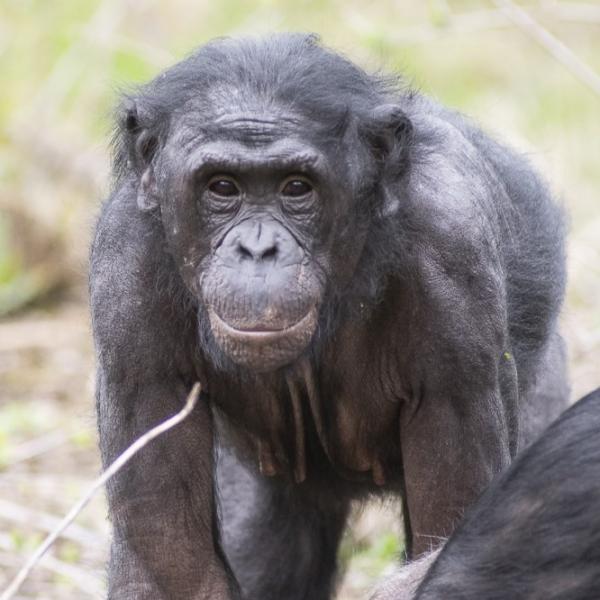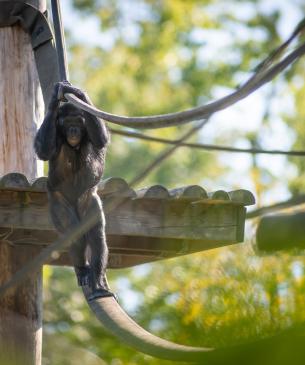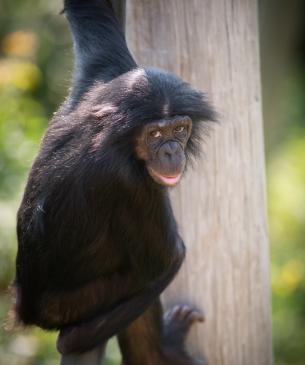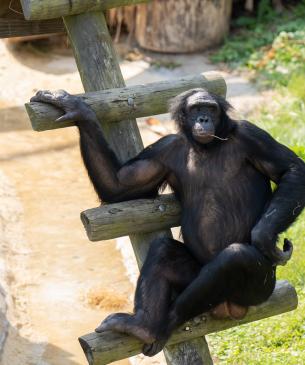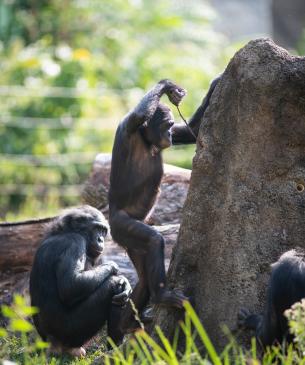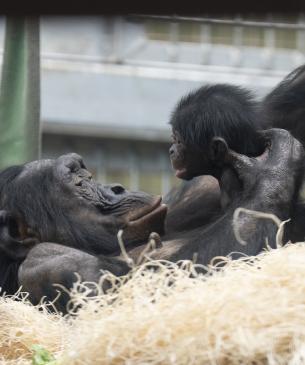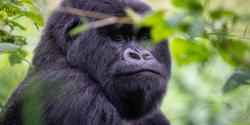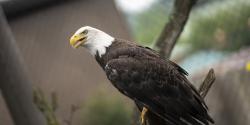Bonobos have a polygynandrous mating system, where females can be approached and mate with any unrelated male within their group. They breed throughout the year without a specific breeding season. When female bonobos are ready to mate, their genitals swell, and this swelling lasts for about ten to twenty days. Most mating happens during this time. After mating, the gestation period, or time before giving birth, lasts about seven to eight months. Usually, a single baby bonobo is born, weighing between two and four pounds, but twins can occur, although they are rare.
Baby bonobos depend on their mother's milk and cling to her for several months. The mother takes care of the baby most of the time. As the baby grows and gets a bit older, the mother allows the baby to interact with other members of the group. The mother decides who can visit her baby. All group members, including males, spend time with the young bonobos. Each mother bonobo has her own style of parenting and may let others interact with her baby at different times.
Weaning, or the process where the baby stops drinking milk, starts gradually around the age of four. During this time, mothers often let their younger ones eat alongside them so they can learn about food choices instead of just getting food directly. A mother may also stop her juvenile (young bonobo) from returning to her nest, pushing it to make its own nest. Bonobos usually have a new baby about every five to six years.
When female bonobos reach sexual maturity, usually between the ages of seven and fourteen, they leave their birth group. In contrast, male bonobos typically stay in their birth group and remain with their mothers for their entire lives.

